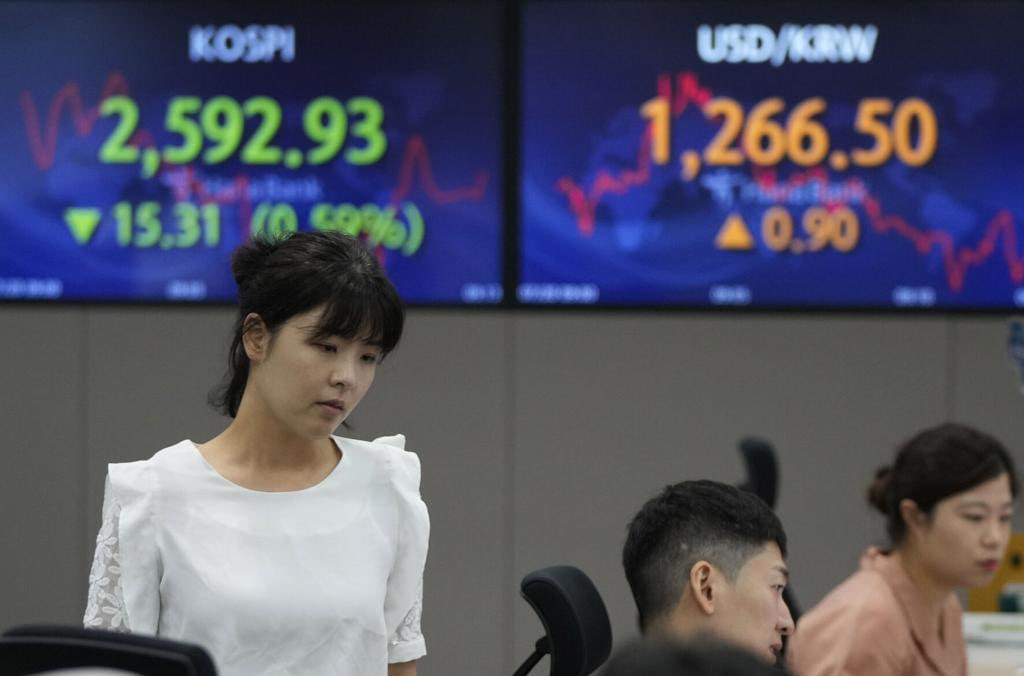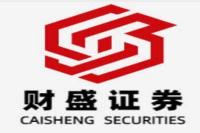China's Economic Pulse: Key Policy Shifts and Emerging Trends in 2024
Meta Description: Dive into China's dynamic economic landscape in 2024. This in-depth analysis explores key policy shifts impacting cross-border e-commerce, AI, renewable energy, and more, offering expert insights and future predictions. #ChinaEconomy #PolicyAnalysis #CrossBorderEcommerce #AI #RenewableEnergy
This isn't just another news roundup; it's a deep dive into the beating heart of China's economy in 2024. We're peeling back the layers of recent policy announcements, dissecting their implications, and peering into the crystal ball of future economic trends. Forget dry statistics and jargon-filled reports – we're bringing you a human-centric analysis, peppered with real-world examples and seasoned with years of experience in the field. Prepare to be captivated by the intricate dance of government initiatives, technological breakthroughs, and market dynamics shaping the nation's economic trajectory. This is more than just data; it's a story of innovation, resilience, and the relentless pursuit of progress. We'll be examining the impact of government support on burgeoning sectors like cross-border e-commerce and artificial intelligence, exploring the challenges and opportunities within the renewable energy sector, and assessing the strategic maneuvers of key players in the tech industry. Buckle up, because this journey into the heart of China's economic engine is going to be a wild ride!
Cross-Border E-commerce: A Government-Backed Boom?
The Ministry of Commerce (MOFCOM) recently unveiled a series of policies designed to boost foreign trade, with a significant focus on accelerating the growth of cross-border e-commerce. This isn't just lip service; it's a full-throated commitment to fostering an environment where Chinese businesses can thrive in the global marketplace. The emphasis on building "smart logistics" platforms overseas and creating dedicated cross-border e-commerce service platforms signifies a proactive approach to addressing logistical hurdles and bureaucratic red tape. Imagine the impact: streamlined processes, reduced shipping times, and access to much-needed legal and tax resources – a game-changer for ambitious SMEs (small and medium-sized enterprises) looking to expand their reach beyond China's borders. This targeted support signals a commitment to nurturing this vital sector, potentially transforming it into a powerhouse of economic growth. The sheer scale of the potential market is staggering, and with government backing, the sky's the limit! The MOFCOM’s strategy feels less like a gentle nudge and more like a powerful shove in the right direction.
Furthermore, the policy's focus on supporting the import of key equipment and resources, including those for recycling, displays a forward-looking perspective. This is not just about exporting; it’s about building a sustainable and resilient economy. By strategically importing essential materials, China aims to strengthen its manufacturing base, ensuring a steady supply of components for its growing industries. Talk about a holistic approach – smart, strategic, and sustainable!
Artificial Intelligence: Fueling the New Industrialization
The Ministry of Industry and Information Technology (MIIT) convened a roundtable on supporting AI development, emphasizing the crucial role of AI in driving "new industrialization." Wow! This isn't just about incremental improvements; we're talking about a fundamental shift in how industries operate. The MIIT's focus on bolstering "computing power, models, and data" highlights the critical infrastructure needed to support AI's rapid expansion. This translates to significant investment in R&D, fostering a vibrant ecosystem where hardware and software development work in perfect harmony. The implications are vast—from automating manufacturing processes to enhancing supply chain efficiency—and the potential to increase productivity and improve competitiveness is enormous. This isn't just about adopting AI; it's about becoming a global leader in its development and application.
The MIIT's focus on AI is not just theoretical; it's tangible, evident in the numerous initiatives already underway. There’s a growing number of companies focused on AI application development across various sectors. One area witnessing particularly rapid growth is AIGC (AI-generated content), with market predictions pointing towards an exponential increase in market size over the next decade. This suggests a vibrant and dynamic market with enormous potential for investors and entrepreneurs alike.
Renewable Energy and the Green Transition
The MIIT's release of the “Guidance on the Construction of a Comprehensive Standardization System for Smart Homes (2024 Edition)” illustrates a strong push towards smart home technology, which inherently incorporates elements of renewable energy integration. The emphasis on ‘smart energy’ signifies a commitment to integrating renewable energy sources into residential spaces. This suggests a broader national strategy to promote energy efficiency and sustainability. The document’s detailed breakdown of application scenarios, including smart health, smart home appliances, and smart security, indicates a holistic approach to integrating smart technologies into daily life, which inevitably involves renewable energy solutions.
Moreover, the significant breakthroughs in gold mining in Hunan province, as reported by the Daily Economic News, highlight the potential for additional investment in the mining sector. These discoveries underscore the need for sustainable mining practices. While gold extraction is not directly renewable, the emphasis on sustainable resource management reflects a broader commitment to responsible resource utilization, mirroring the government's emphasis on renewable energy sources. It's a subtle but important connection, reflecting a broader commitment to resource management.
Huawei: A Technological Titan's Strategic Moves
Huawei's recent announcements, including the launch of the Mate X6 with its innovative distributed Xuanwu architecture and the successful registration of trademarks like "Xianjie" (Fairyland), "Tianjie" (Heaven Realm), and others, demonstrate the company's aggressive pursuit of technological leadership. The Xuanwu architecture, focusing on improvements in heat dissipation and reliability, represents a significant leap forward in mobile technology, suggesting Huawei's dedication to pushing the boundaries of innovation. The trademark registrations, covering electric vehicles and related products, hint at Huawei's ambitions to expand beyond its core competencies in telecommunications. This strategic diversification underscores the company's ambitious long-term vision. This is more than just product launches; it's a statement of intent, a bold declaration of ambition to shape the technology landscape for years to come.
Goldman Sachs’ Positive Outlook on the A-Share Market
Goldman Sachs' continued "overweight" recommendation for the A-share market, driven by projected earnings growth and valuation factors, reflects a positive sentiment towards China's equity market. This optimistic forecast suggests that investors anticipate continued economic growth and positive corporate performance. The projected growth rates for MSCI China and the CSI 300 indices highlight the potential for substantial returns. This positive outlook, from a globally respected financial institution, adds weight to the argument that the Chinese economy remains a strong investment opportunity. This independent endorsement should be music to the ears of investors considering opportunities in the Chinese market.
Frequently Asked Questions (FAQ)
Q1: What are the main policy thrusts driving China's economic strategy in 2024?
A1: Key policy focuses include boosting cross-border e-commerce, accelerating AI adoption in various sectors, promoting renewable energy integration, and fostering sustainable resource management. These policies aim to create a more balanced and resilient economy.
Q2: How is the government supporting the growth of cross-border e-commerce?
A2: The government is investing in building smart logistics platforms overseas, creating specialized service platforms offering legal and tax support, and facilitating the import of essential equipment and resources.
Q3: What is the role of AI in China's "new industrialization" strategy?
A3: AI is seen as a crucial driver of productivity and efficiency gains. The focus is on enhancing computing power, developing sophisticated AI models, and ensuring a robust data infrastructure.
Q4: What are the implications of Huawei's recent technological advancements and strategic moves?
A4: Huawei's advancements signal a commitment to technological innovation and leadership, with implications for the global mobile technology market and its expansion into new sectors like electric vehicles.
Q5: What is the outlook for the A-share market according to Goldman Sachs?
A5: Goldman Sachs maintains an "overweight" rating for the A-share market, projecting significant growth in the coming years driven by earnings growth and appealing valuations.
Q6: What are some of the challenges China faces in achieving its economic goals?
A6: Challenges include maintaining economic stability amidst global uncertainty, managing potential risks associated with rapid technological advancements, and ensuring the sustainable utilization of resources while balancing economic growth with environmental concerns. These are significant, but not insurmountable, hurdles.
Conclusion
China's economic landscape in 2024 is a dynamic and exciting one. The government's proactive policy initiatives, combined with technological breakthroughs and the ambition of key players in the private sector, paint a picture of an economy poised for continued growth and transformation. While challenges certainly exist, the nation's commitment to innovation, technological advancement, and sustainable development suggests a bright future. This analysis provides a snapshot of the current climate, but the story is far from over. The next chapters will be written as we continue to observe the interplay of policy, technology, and market forces shaping China's economic destiny. Stay tuned – it's going to be an electrifying ride!



